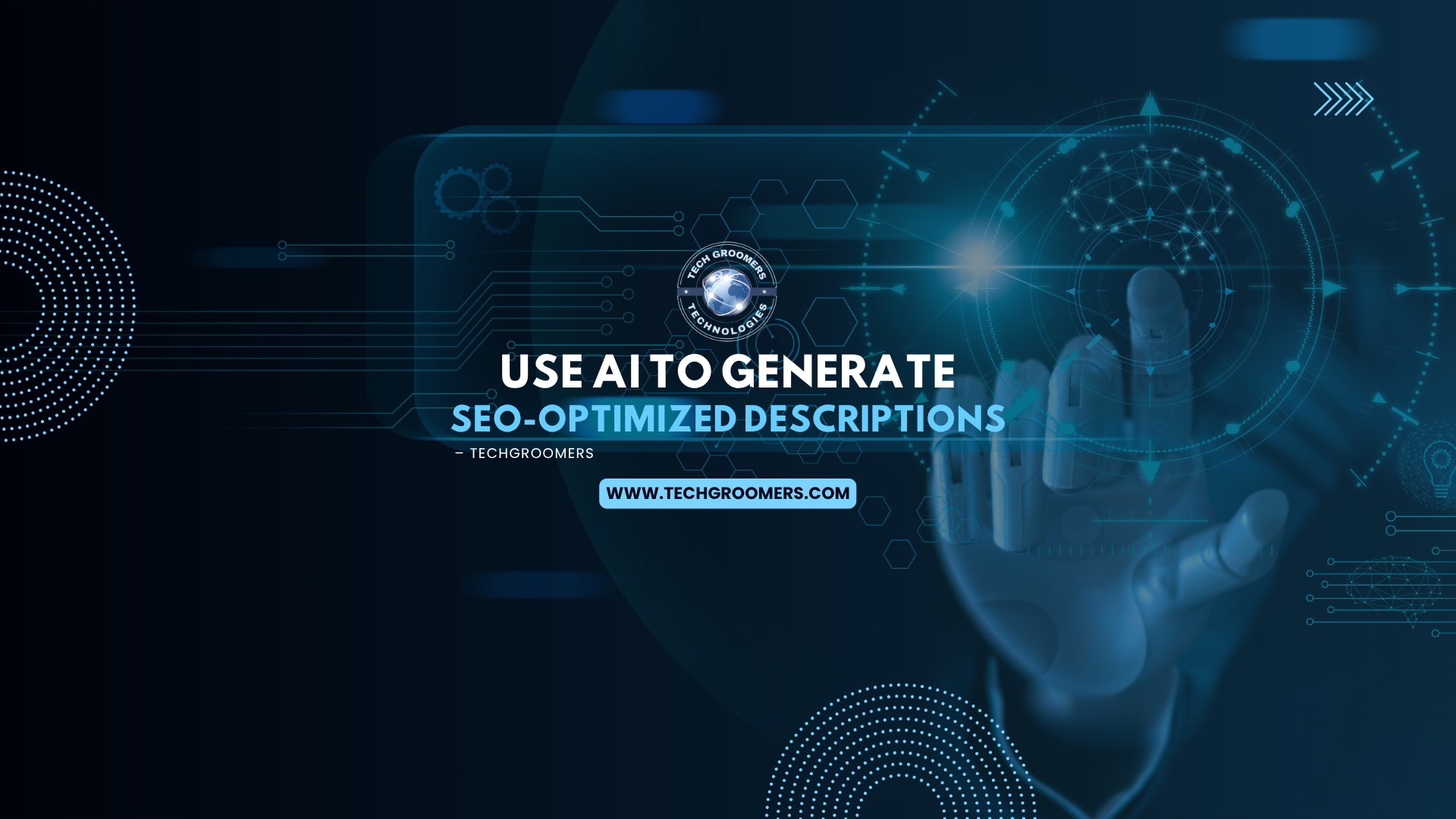In today’s fast-paced digital world, creating content that not only attracts visitors but also converts them is more important than ever. If you’re running an online store or working with e-commerce platforms, writing product descriptions manually for every item can be time-consuming and inconsistent. That’s where AI-powered solutions come in.
In this blog by TechGroomers, we’ll dive into how to use AI tools to generate SEO-optimized product descriptions that boost visibility, enhance user experience, and drive more sales. Whether you’re a small business owner or managing a large catalog, this strategy is your key to smarter content creation.
What Makes a Product Description SEO-Friendly?
Before we get into AI, let’s cover the basics of an SEO-friendly product description. It’s not just about describing your product; it’s about making sure your content:
- Contains high-ranking keywords
- Uses natural and engaging language
- Highlights key features and benefits
- Answers potential customer questions
- Encourages conversions with clear calls to action
Why Use AI for Product Descriptions?
AI, particularly generative AI tools, can:
- Analyze top-performing keywords
- Understand user intent
- Create diverse content variations
- Save countless hours of manual work
- Maintain consistency across a massive catalog
With machine learning models trained on vast datasets, AI tools like ChatGPT, Jasper, Copy.ai, and Writesonic can craft product descriptions that sound human and align with your brand tone.
Step-by-Step Guide: Using AI to Write SEO-Optimized Product Descriptions
Step 1: Define Your Product Clearly

Provide AI with essential details:
- Product name
- Features and specifications
- Use cases
- Target audience
- Unique selling points
The better your input, the more accurate and effective the output.
Step 2: Choose an AI Tool
Some popular tools include:
- ChatGPT (versatile and flexible)
- Jasper AI (e-commerce-focused)
- Copy.ai (templates and bulk generation)
- Writesonic (real-time keyword integration)
TechGroomers recommends testing a few options to see what aligns best with your brand.
Step 3: Input Keywords Strategically
Make sure to include high-ranking keywords relevant to your product. Use tools like:
- Google Keyword Planner
- SEMrush
- Ahrefs
- Ubersuggest
Balance is key: overuse can harm your SEO. Keep one-word keywords under 3%, two-word phrases under 2%, and three-word phrases under 1%.
Step 4: Generate and Refine the Content
Once the AI provides a description:
- Check for clarity and tone
- Adjust word choice for your audience
- Insert secondary keywords naturally
- Add internal links to related products or blogs
You can also ask AI to generate multiple versions for A/B testing.
Step 5: Optimize for Conversion
Use persuasive elements like:
- Benefits-focused headlines
- Bullet points for readability
- Emotional triggers (e.g., comfort, luxury, savings)
- Strong calls-to-action (Buy Now, Add to Cart)
Step 6: Test and Monitor Results
After publishing, monitor performance using tools like:
- Google Analytics (page views, bounce rate)
- Search Console (ranking performance)
- Heatmaps (user behavior)
If needed, tweak your descriptions to improve user engagement.
Common Mistakes to Avoid
- Keyword stuffing: Makes content unreadable
- Over-reliance on AI: Always review output manually
- Ignoring customer pain points: Focus on benefits
- Lack of uniqueness: Avoid generic or repetitive text
Real-Life Example by TechGroomers
Let’s say you’re selling a bamboo toothbrush. Input the following to an AI tool:
“Eco-friendly bamboo toothbrush with soft bristles, biodegradable handle, ideal for sensitive gums, available in 4 colors.”
AI Output:
“Upgrade your oral care routine with our eco-friendly bamboo toothbrush. Featuring ultra-soft bristles for gentle cleaning and a biodegradable handle, it’s perfect for sensitive gums and sustainable living. Available in four vibrant colors.”
This version is clean, keyword-rich, and customer-focused.
Conclusion
If you’re looking to scale your product content efficiently, AI is no longer a luxury—it’s a necessity. By combining the power of automation with SEO best practices, you can build a compelling catalog that ranks well and converts visitors.
At TechGroomers, we help businesses harness cutting-edge tools to elevate their online presence. From AI-powered content strategies to SEO audits, we’ve got your digital growth covered.
Want help optimizing your product descriptions using AI? Get in touch with TechGroomers today! Let’s grow smarter together.




Leave a Reply